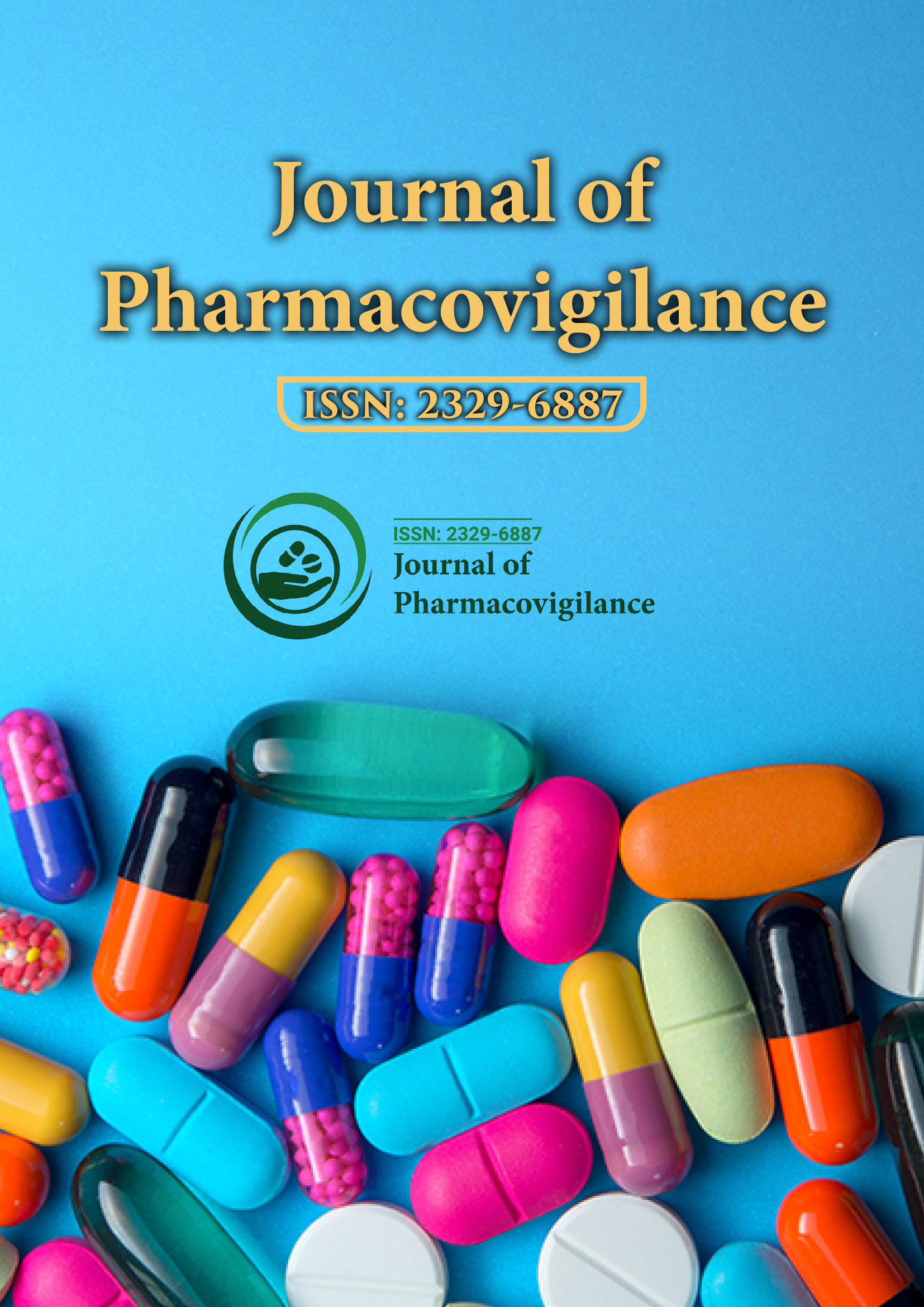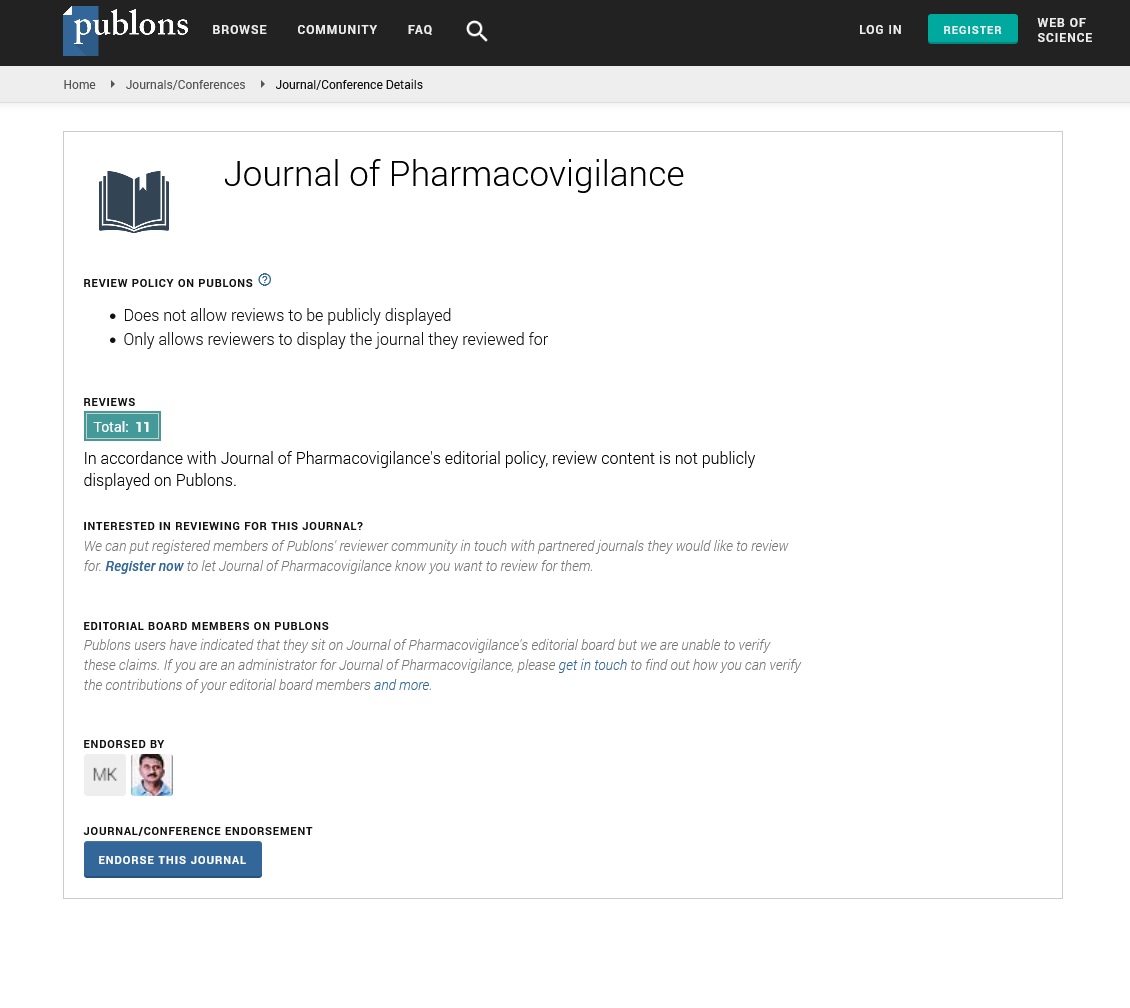Indexed In
- Open J Gate
- JournalTOCs
- The Global Impact Factor (GIF)
- RefSeek
- Hamdard University
- EBSCO A-Z
- OCLC- WorldCat
- Publons
- Euro Pub
- Google Scholar
Useful Links
Share This Page
Journal Flyer

Open Access Journals
- Agri and Aquaculture
- Biochemistry
- Bioinformatics & Systems Biology
- Business & Management
- Chemistry
- Clinical Sciences
- Engineering
- Food & Nutrition
- General Science
- Genetics & Molecular Biology
- Immunology & Microbiology
- Medical Sciences
- Neuroscience & Psychology
- Nursing & Health Care
- Pharmaceutical Sciences
Opinion Article - (2022) Volume 10, Issue 4
Assessments and Fundamentals of Medication Errors
Leo Moses*Received: 21-Mar-2022, Manuscript No. JP-22-16594; Editor assigned: 24-Mar-2022, Pre QC No. JP-22-16594(PQ); Reviewed: 07-Apr-2022, QC No. JP-22-16594; Revised: 14-Apr-2022, Manuscript No. JP-22-16594(R); Published: 21-Apr-2022, DOI: 10.35248/2329-6887.22.10.368
Description
Dosing errors are defined as avoidable dosing misuse. These errors can occur at any point in the process, including drug ordering, posting, dispensing, administration, and monitoring. Some errors are due to what psychologist James Reason calls dangerous behavior15. This is an action that violates a policy or procedure but can be done to save time.
Dosing mistakes may or may not have serious consequences. Some dosing mistakes change a patient's outcome, but the change is harmless. Other dosing mistakes can cause harm, but they do not. However, serious un-captured dosing mistakes actually harm the patient. A study estimated that 30% of patients with drug-related injuries died or were disabled for more than 6 months. 17 Similar to dosing errors, ADE can occur at any stage of the dosing process.
In theory, all dosing mistakes can be avoided. The same is not true for ADE. Avoidable ADRs could have been avoided if appropriate and rational measures were taken. For example, an anaphylactic response to penicillin is a preventable ADE if the patient's allergy to penicillin is recorded in medical records, or if the patient can recognize and inform the doctor of a previous penicillin response. However, an allergic reaction to penicillin in patients who are unaware of their allergy to penicillin is an unavoidable ADE.
Drug mistakes can occur at any time between the doctor prescribing the drug and the patient taking the drug. If patients are lucky, dosing mistakes have little or no effect on their wellbeing. However, if the patient is unlucky, dosing mistakes can cause serious harm, including death. As the data show, this happens much more often than it should.
The US Food and Drug Administration state that it receives more than 100,000 reports of alleged dosing mistakes in the United States each year. In addition, dosing mistakes are estimated to harm an estimated 1.5 million people annually. Each of these people has a story that tells about mistakes that may have been avoided.
Dosing errors represent a more common category of errors in the medical setting. They refer to preventable events that can cause or cause improper use of drugs during the course of treatment or injury to the patient. These types of events relate to professional practices, medical products, procedures and systems, including prescription, mentoring communication, drug labeling, packaging and nomenclature, prescription, dissolution, distribution, management, education, monitoring and use. It may be. Classification and evaluation of medication errors according to importance can be an important factor in improving the process to make drug administration as safe as possible. The main categories of causes that lead to dosing mistakes are related to the scientific competence of healthcare provider systems, healthcare professionals, pharmacies, and staff. Technology has become an integral part of medicine these days. The right technology can help improve efficiency, improve quality, and reduce costs.
Some of the benefits that technology can offer are categorized as follows: Support communication between doctors. Improve drug safety; reduce potential malpractice and adverse events. Increase access to medical information and promote patient-centric care. The purpose of this chapter is to provide a comprehensive review of the literature on definitions, classifications, causes, and key strategies for avoiding medication errors.
Citation: Moses L (2022) Assessments and Fundamentals of Medication Errors. J Pharmacovigil. 10:368.
Copyright: © 2022 Moses L. This is an open-access article distributed under the terms of the Creative Commons Attribution License, which permits unrestricted use, distribution, and reproduction in any medium, provided the original author and source are credited.

